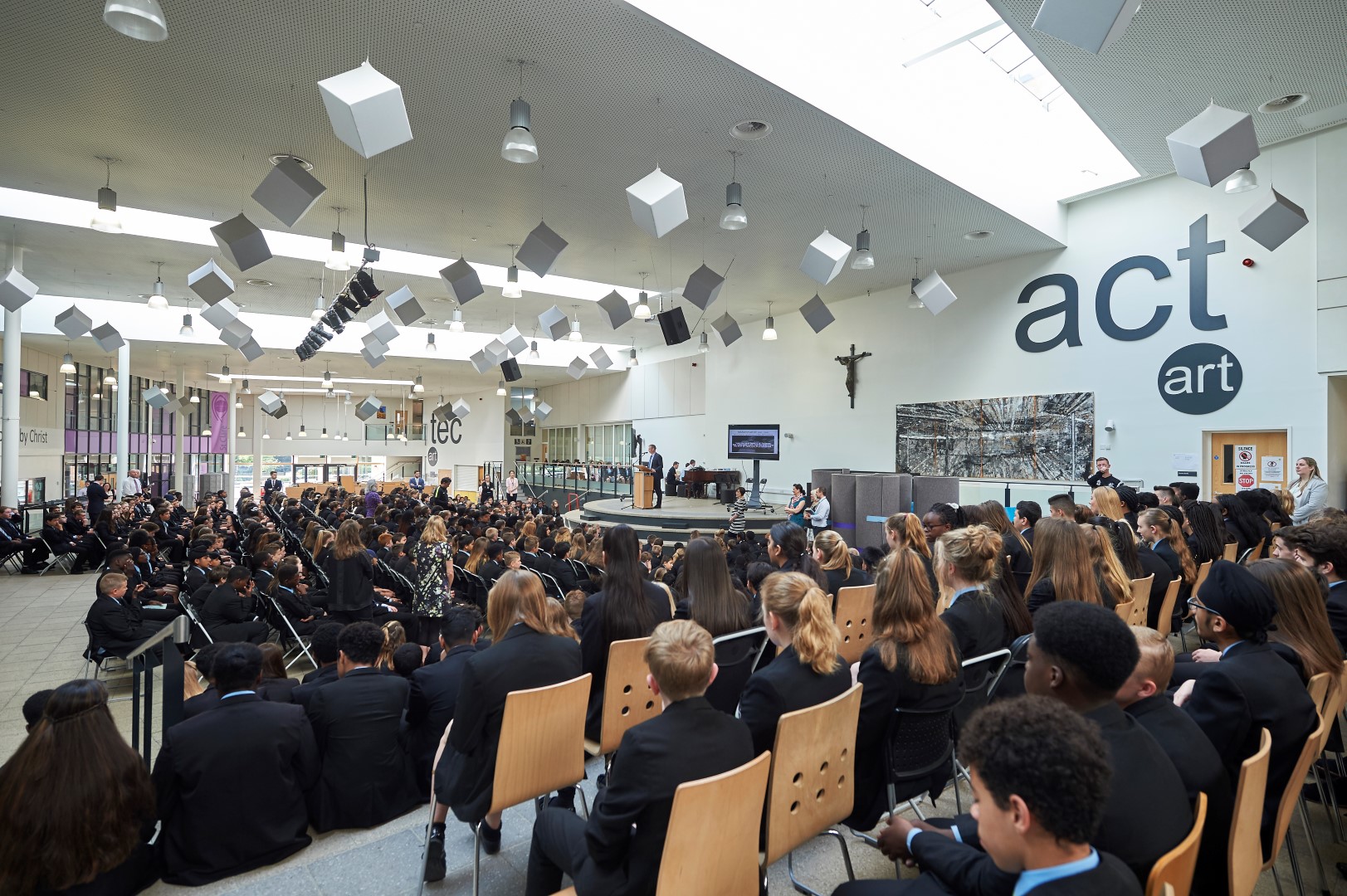School History - Part 3 - From Secondary Modern to Comprehensive
From Secondary Modern to Comprehensive
Into the new decade the fortunes of the school were at a low ebb. Pupil were accommodated in temporary huts, staff were hard to attract and more difficult to retain. Administration was deteriorating and generally the school was of little consequence in education. Stephen Bray, appointed Headmaster in 1951 was in a difficult situation.
However, changes were in the air when Father Eamonn Mundy was appointed Chair of Governors; his vision was one of a 3 Form entry Infant School, 360 pupils, a 3 Form entry Junior School, 480 pupils and a minimum 6 Form entry Comprehensive School, 800 pupils, with 6th Form. The vision of the school was one where all social classes would be integrated and to which well qualified staff would be attracted and remain. By the mid-1950s a House System was in place and a Prefect system introduced. The school took on the structure of a Secondary Modern. A school uniform was added and with it a school badge. The first Prize giving ceremony took place in 1957 and gardening was established. The latter flourished until the garden was used as the site for the subsequent science building.
The new Headmaster, Jack Tillotson supervised the gradual transformation. In September, 1958 the number on roll was 179 students with 8 staff, excluding the Head. The following year the roll was 209 students, 120 being boys and in September, 1960 the numbers had increased further to 252; the September entry of 87 ensured a three Form entry for the first time. Tillotson started a Youth Club and an annual Easter Holiday tour to Europe. An annual school magazine was started and Prize Giving inaugurated. The Inter-House Sports’ Day and Swimming Gala were in place by the new decade and the 1959/1960 year was auspicious in so far as honours were attained on the sporting field – football - St John’s were finalists in the Humphrey Cup and duly won the Headmaster’s Shield. The grounds were used for representative football in addition to cricket, thanks to the caretaker, George Martin.
The building programme commenced in different stages but by the mid-1960s Phase 2 had been completed - what would be known as ‘The Lower School’. By then there were 345 pupils at the school with 18 staff and the Head. The transformation continued and by the end of the decade Part 1 of Stage 3 – ‘The Upper School’ was completed with the school population in excess of 500 students. A swimming pool was completed in 1972 and by mid-decade Stage 3 was fully completed.
It was not just the fabric that was changing but also the terminology – in September, 1974 St John’s RC Secondary Modern become a Comprehensive. The roll was now 1,050 students – Canon Munday’s dream had become a reality. By 1980 an all-weather playing surface and a Sports’ Hall had been built and the first ‘A’ Level examinations were taken by the students who started their education at the school in 1974. Auspicious times. Raymond Whiteley, retired in 1984, having been Headmaster since 1971. He had supervised the many changes that the 1970s had wrought, not alone in education but also in building works. His successor, Frank Clare would develop the school from that base, overseeing the consolidation made. Among the more notable staff employed was Pat Sane and his wife Sadie. Pat Sane proved an effective Site Manager, ensuring the grounds were in excellent condition and the buildings maintained, for a quarter century from 1984.
The school Chapel opened in February, 1994, being dedicated by Archbishop Michael Bowen. The Chapel was already in use with the first Service on September 7th, 1993 – the first day of the New Academic Year. In November, 1993 Grant Maintained Status was applied for and granted, to commence on April 1st, 1994. Frank Clare retired in March, 1997 leaving the Deputy Head, Mike Latham to attend to the first Ofsted Inspection in late April. St John’s was described as an improving school with many strengths which provides its pupils with both a good quality of education and good provision for their spiritual, moral, social and cultural development.

